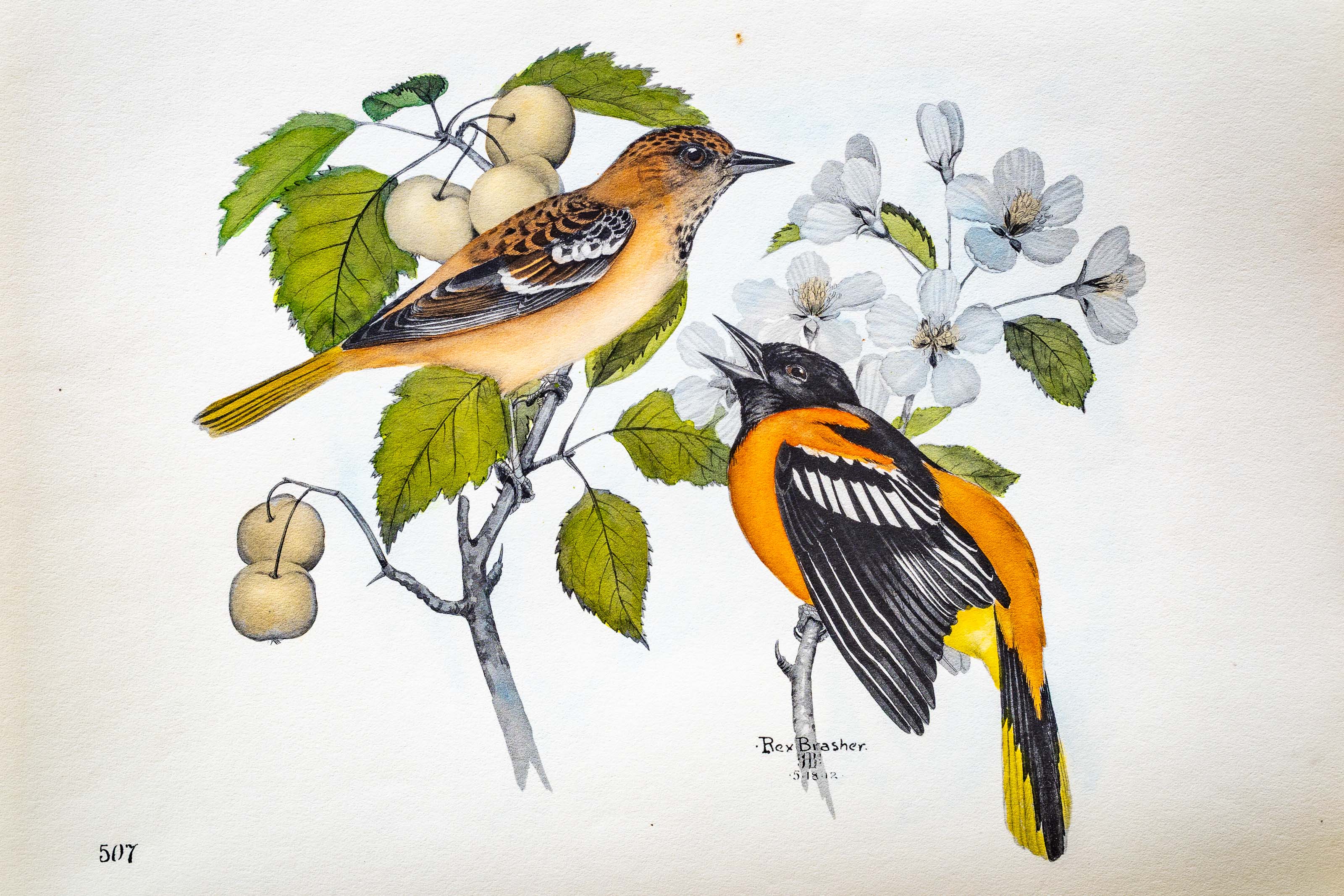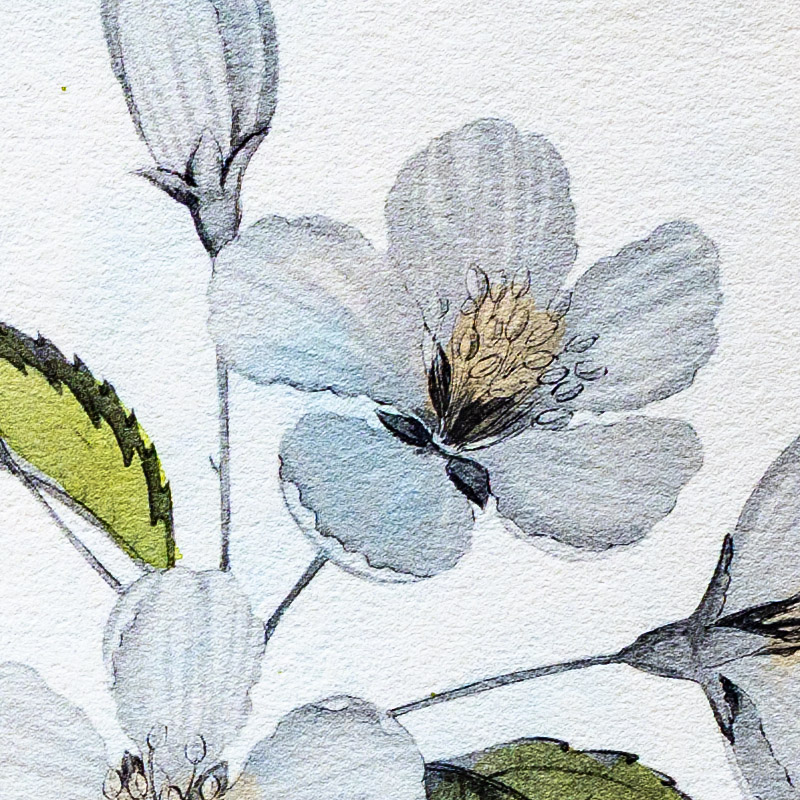






1912
1931
8
507
A team of dedicated board members, volunteers, and student interns has published every page in Volume 9. This volume includes 360 images of paintings and lyrical descriptions of birds, now available online for everyone to enjoy anywhere in the world. This is a monumental task. Each volume requires approximately 400 hours to photograph, edit, transcribe, catalog, and publish online. We need your support to complete this work.
If you're tech-savvy, have a good eye, are meticulous with details, and love structured data, please consider volunteering by emailing us at hello@rexbrasher.org.
We encourage all bird lovers and supporters to consider a monetary donation to support our mission to make Rex's work available for everyone. You can provide a one-time or recurring donation online.
The handsome BALTIMORE'S whistling call has a tone of gaiety and cheerfulness quite its own. The listener feels that here is a fellow who takes life as it comes and finds it good.
The males take their own northbound airplanes a week or so before the females and when they land in our New England orchard we know true Spring is with us. There is a wide variation in individual notes, spacing and tone sometimes puzzling experienced ornithologists. Gladden tells of one who whistled Ta-ra-ra-boom de-a thru Pittsburgh elms in the year when first that song was sung. One of our birds whistled the Wood Thrush refrain but betrayed himself quickly by so doing later in the day than the Thrush sings.
When a pair are "in residence," a good apple crop is assured for they live almost entirely on the cuculio worm, searching carefully thru the blossoms for the lurking pests. Few escape. Crows are their worst enemies, seizing eggs or young from nests altho the courageous parents sometimes foil the crime — and if a rifle is handy I assist in routing the villains.
"How falls it, Oriole, thou has come to fly
In tropic splendor thru our northern sky?
At some glad moment was it Nature's choice
To dower a scrap of sunset with a voice?"
E. Fawcett.
NEST: an extreme development of bird architecture. Suspension strings are first securely fastened and bark, fibres, horsehair, cord or worsted cleverly interwoven and so durable as to withstand two winters. They are swung on pendulous ends of elms, maples or other trees, and sway so in hard winds that often I have wondered if the young became seasick.
EGGS: 4 — 6; white with scrawled open lines and spots of brown and black.
Eastern and Central North America, north to latitude 55 degree in interior, and west to eastern edge of Rocky Mountains.
A 30-foot tree distributed from Ontario to northern shores of Lake Erie, south thru Pennsylvania and New York to Alabama.